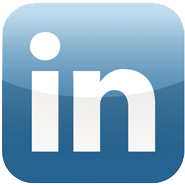LinkedIn: A Photographer’s Guide, Part 2
 Jorge Parra continues his two-part article (part one is here) in which he shares how he leverages LinkedIn in his marketing and to help him identify potential clients. Jorge is a commercial and fine art photographer based in Miami, FL, his work can be seen at www.jorgeparra.com.
Jorge Parra continues his two-part article (part one is here) in which he shares how he leverages LinkedIn in his marketing and to help him identify potential clients. Jorge is a commercial and fine art photographer based in Miami, FL, his work can be seen at www.jorgeparra.com.
Three of the most powerful tools in LinkedIn are the Groups, the Answers, and what I call the Research Engine.
Groups
Belonging to groups in which your potential clients might roam is a critical step for your LinkedIn presence. Just point your browser to the “Groups” tab in Linkedin and start researching for the thousands of groups already established. Joining groups is sometimes instantaneous, but sometimes they are moderated and you’ll need to be approved as a member. The idea is to join groups and participate in some of the discussions there, share your knowledge and expertise, and bring alternative points of view to what is under discussion. Of course, your goal is to start building relationships.
The greatest collateral benefit of belonging to groups is that you can actually ask all (or selected) members of a group to join your network. LinkedIn considers this a valid method of connecting. Once in your network, a person’s contact info is accessible. Of course, this information is not meant to be used to just spam those contacts; you should build relationships first!
You may recall I mentioned in part one of this article that there is no benefit for photographers to join photographer’s groups, (stop preaching to the choir, etc). A fews possible exceptions would be for educators, presenters, seminarists, and workshop instructors, as most of the photographers in those groups could become their customers. You want to roam where your potential customers roam!
Answers
An equally powerful tool is to commit to answering the myriad of questions posted by an endless list of people looking for specific advice. This is, to me, the most interesting part of LinkedIn. Look for the “Answers” tab in LinkedIn. You provide feedback in your areas of expertise, helping people in their quests, who then, often immediately, want to become part of your network. All of this happens outside the groups, so responding to queries will help you in your research to find good groups to roam in as well!
The amazing additional benefit of providing “answers” is that those who asked the original questions will be tagging and rating (first, second, third) the quality of the responses received. Both LinkedIn (in its internal research search engine) and Google take note of those tags and quality answers will help you rank better in future searches. This is like good Karma coming back to you, thanks to your original input. Seems to be a natural law in this universe.
LinkedIn’s “Research Engine”
As I said above, I consider LinkedIn’s search feature a “Research Engine” which is more than a simple search engine. This is because you can get deep into researching the companies you specifically want to target, and it is difficult to think of any relevant company that is not listed, in detail, in LinkedIn. If you don’t want to go into “Groups” or “Answers”, then learn to get deep into “Research”, but I need to emphasize, all three tools mingle perfectly well.
You can do things like “Follow this Company” and receive notifications about news and updates related new people entering the company, new projects underway, and much more. Using this information you can start identifying specific people you want to make contact with, and use the tools described above to help in your effort to make contact. Right now, I am waiting on some initial contact attempts I have initiated to Victoria’s Secret, as one of my plans is to eventually have them as a client. With the Linkedin’s “Research Engine” capabilities, there is no need to think small.
Something worth mentioning is your LinkedIn profile, you NEED to polish what people are reading about you. Everything I written above depends, in large part, on this one item, so start by puttin gin place your best looking profile and explore all possible profile settings ASAP. There is always more than the basics in LinkedIn.
On a side note, I should add that Facebook also offers segmentation into Groups, and there are hundreds of groups indeed, but I have never got the quality feedback or established as many positive contacts with potential clients in Facebook as I have in LinkedIn’s groups. Others may have better luck, so I encourage everyone to explore this option too (assuming, of course, you have already set up your Business Page in FB!)
Care to share how LinkedIn is working for you?
Thanks and good luck!

 groozi.com is a blog about negotiating and web marketing. Weekly posts are written primarily by me, Blake J. Discher, a
groozi.com is a blog about negotiating and web marketing. Weekly posts are written primarily by me, Blake J. Discher, a 

6 Comments
Tom Mitchels
about 12 years agoThanks for the helpful article! I'm just getting into LinkedIn now and am still learning the ropes. Although I can see the benefits with using LinkedIn professional, I do find it overwhelming for a newbie. I just don't know where to begin sometimes.
Jorge Parra
about 13 years agoSteve, as you explore Linkedin, I would suggest two actions: first, joining Groups that already exist, and second, providing some Answers, and in time, you will notice which tool helps you more to approach and contact the people you really want to make contact with. From my experience, joining Groups is truly effective, so search for Groups related to your business, specially where your current clients and prospects may be roaming around. You may use the Research Engine in Linkedin to find out where your prospects roam and join those groups. Now, if you have the time and commitment to start and feed content into a new Group of your own, go for it, however I would do that last, and only after you have already acquired some "Critical Mass" of contacts and then, you can expect some 10% of those contacts might be joining you in this new group. In general, 500 contacts is a critical mass, as considered by Linkedin. I don't know exactly where this figure comes from, but I can assure you that building a big network becomes much easier once you achieve this point. Linkedin allows you to join up to 50 different Groups, and It is practically impossible to find that many useful groups related to your areas of interest. That said, if you are inclined, for example, to share a hobby or some cultural/artisic personal thing, you can then add a few of those groups, regardless of not having any direct impact on your business. You may be surprised who can you meet at those groups! In my case, I have joined some Green/sustainability groups, as this is an area I love, advocate for, and like to share with others. In brief, go for and join your choice of Groups first, add some great Answers in you area(s) of expertise, and build your critical mass of contacts from these tools. These are the very first steps and well defined goals to benefit from your Professional Network in Linkedin. Hope this helps a bit! Jorge
Steve
about 13 years agoJorge, Very interesting and well written article. I would like to ask, though, what would your recomendation be to a small business owner. Would I establish more contacts through the "answers" feature or would I have better luck forming a new "group". Thanks. I'm very interested in hearing your input. Steve
Jorge Parra
about 13 years agoHi Nick. In few words, you did right. Your friend, just as many people, don't get the difference between social network and professional network and they work different: In FaceBook You can "friend" with friends of friends without knowing them, and it is ok. This won't work well in Linkedin. This helps me, for example, to get to know models and make up artists in FB. Once I shoot something and post a few pics in FB, the models involved then spread out the word in their pages, so I get friend requests from other models, friends of them, and this is ok, I enhance my talent pool for future projects, but in Linkedin we are talking about profesionals related to your career, potential clients, people who might hire you in the mid-long term, people whom you have to earn their trust first, and may later become your clients, or they might refer you to people they know who can use your services. This process of building trust is the basic condition for LInkedin to work as a tool to improve your business. You don't need any of this to build a huge list of so-called "friends" in FB. Referring a third party over to someone you don't know well is, by definition, a no-no. Tell your friend he has to follow some of the suggestions in this Guide. Send him this link and you will be making him a good favor! Jorge
Nick B
about 13 years agoClarification on my post above. My friend sent me an Introduction Request. He asked me to introduce him to my prospect connection on LinkedIn. Thanks!
Nick B
about 13 years agoJorge, Great articles! LinkedIn etiquette question for you. I have a fellow photographer friend (web friend, not close friend, living in another part of the country). We are connected on LinkedIn. He was interested in connecting with one of my contacts (an AD) on LinkedIn and sent me an invitation request. I declined to introduce him. The AD is not a close connection so I don't feel close enough to her to introduce anyone to her, plus the photographer and myself ply similar territory - people, lifestyle, portraits, sports - so I'm not going to introduce a possible competitor (even if we may not be competing currently, we may be in the future), to one of my connections. He thought I was not engaging in the spirit of LinkedIn and social networking in general. I'd love to get your thoughts on this. Thanks!